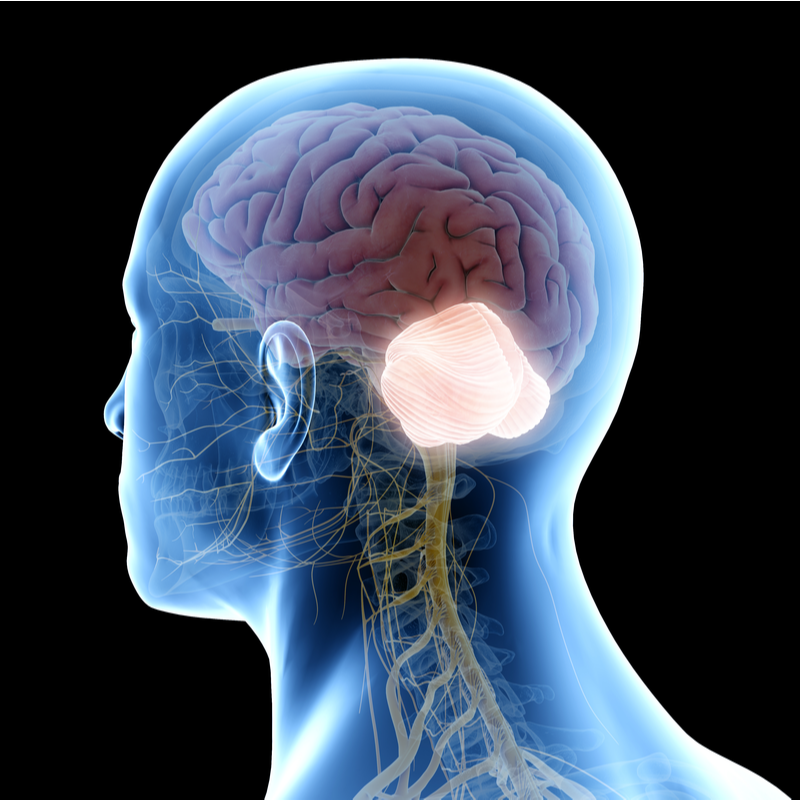
What is Lhermitte-Duclos syndrome?
Lhermitte-Duclos syndrome is also called dysplastic gangliocytoma and is a rare neoplasm of the cerebellum that is associated with abnormal development and enlargement of the cerebellum and increased intracranial pressure. The disease can occur due to a mutation in the PTEN gene and is therefore also part of the so-called PTEN hamartoma tumour syndrome. However, it can also occur as a subtype of Cowden syndrome. Lhermitte-Duclos syndrome usually develops in young adults in the third and fourth decades of life and is less common in children. Lhermitte-Duclos syndrome was first described in 1920 by Jacques Jean Lhermitte and P. Duclos and bears their name.
How is Lhermitte-Duclos syndrome differentiated?
According to of the tumour classification of the World Health Organisation (WHO), , dysplastic gangliocytoma belongs to grade I tumours of the central nervous system. The Lhermitte-Duclos syndrome is characterised both by its benign neoplasms and a malformation, which still makes the exact classification into tumour stages difficult. Among scientists, it is therefore also disputed whether Lhermitte-Duclos syndrome is a hamartoma.
What causes Lhermitte-Duclos syndrome to develop?
The Lhermitte-Duclos syndrome is a genetic disease, i.e. it forms as a result of one or more genes not functioning properly (mutations). It is known to medical experts that the tumour suppressor gene PTEN in particular can trigger disease-causing variants of the Lhermitte-Duclos syndrome. A germline mutation also underlies in Cowden syndrome. A mutation of PTEN leads to a folding and cell migration disorder in the cerebellum. In general, the PTEN gene encodes the multifunctional enzyme phosphatase.
What are the symptoms of Lhermitte-Duclos syndrome?
Smaller lesions caused by Lhermitte-Duclos syndrome are usually asymptomatic. Sometimes, however, they can cause the following symptoms:
- Headache,
- Tremors,
- Nausea,
- Dysfunction of the cerebellum,
- mechanical obstruction of the outflow in the area of the draining CSF channels (hydrocephalus occlusus),
- Damage to nerve cells in the cerebellum and spinal cord (ataxia),
- Visual disturbances,
- Cranial nerve palsies
If
the gangliocytoma is larger, a so-called
occlusive hydrocephalus with cerebellar dysfunction and increased
intracranial pressure can occur. In addition, the following abnormalities can occur
- increased growth of brain tissue (megalencephaly),
- reduced gyration of the cerebral cortex (microgyria),
- Dilatation of the fluid-filled central canal in the spinal cord (hydromyelia),
- Appearance of supernumerary fingers or toes (polydactyly),
- partial gigantism,
- Giant tongue (macroglossia).
What concomitant diseases can be caused by Lhermitte-Duclos syndrome?
Lhermitte-Duclos syndrome can cause the following concomitant diseases:
- Cowden syndrome: autosomal-dominant inherited syndrome which forms hamartomas of all three cotyledons,
- Disorders of the formation of the cortical bone (bone layer surrounding the inner tissue, the so-called spongiosa, of the outer bone),
- Heterotopia of the grey matter: usually form in the medullary camp and cortex,
- Malformation of the cerebral cortex (polymicrogyria)
How is Lhermitte-Duclos syndrome diagnosed?
Lhermitte-Duclos syndrome can be diagnosed by the usual imaging techniques:
- X-ray:images abnormal tissue that involves the cerebellar cortex and is usually confined to one hemisphere. In some cases it may extend to the vermis but rarely penetrates to the contralateral hemisphere.
- Computed tomography:shows a tumour in the cerebellum, which in some cases may contain calcifications and is usually confined to one hemisphere. Only in rare cases is the vermis cerebelli also affected.
- Magnetic resonance imaging: shows the affected area as tiger-skin-like, patterned tissue. If the MRI is performed with a contrast medium, gadolinium accumulation cannot be visualised.
From
histopathological point of view, in Lhermitte-Duclos syndrome
dysplastic Purkinje cells are found, which swell hypertrophically and after some time
vacuolated (riddled with cavities). In
Lhermitte-Duclos syndrome, it is also striking that the layering of the
cerebellum is reversed and the granule cell layer is largely replaced
. As a rule, dysplastic cerebellar gangliocytomas
occur singly and only form on one side.
How is Lhermitte-Duclos syndrome treated?
If Lhermitte-Duclos syndrome does not cause any symptoms, therapy is not necessary at first. If neurological symptoms occur, the tumour can be reduced in size by surgery in order to also reduce the intracranial pressure in this way. The complete removal of the tumour is usually not necessary and is also extremely difficult in most cases due to the location of the tumour. It often happens that the tumour develops again after some time (recurrence).
What is the prognosis for Lhermitte-Duclos syndrome?
Since Lhermitte-Duclos syndrome resembles Cowden syndrome, the disease carries an increased risk of developing other neoplasms such as breast, thyroid and/or endometrial cancer. Patients should therefore have imaging check-ups on these parts of the body at regular intervals in order to diagnose and treat a tumour at an early stage if necessary.
How can Lhermitte-Duclos syndrome be prevented?
Lhermitte-Duclos syndrome is a hereditary disease. Since the cause of the disease is therefore in the genes, there are hardly any preventive measures to prevent Lhermitte-Duclos syndrome so far. However, there is the possibility, especially in family planning, to make use of genetic counselling. Also, family members of an affected person should be quickly screened for Lhermitte-Duclos syndrome in order to also start treatment at an early stage.
